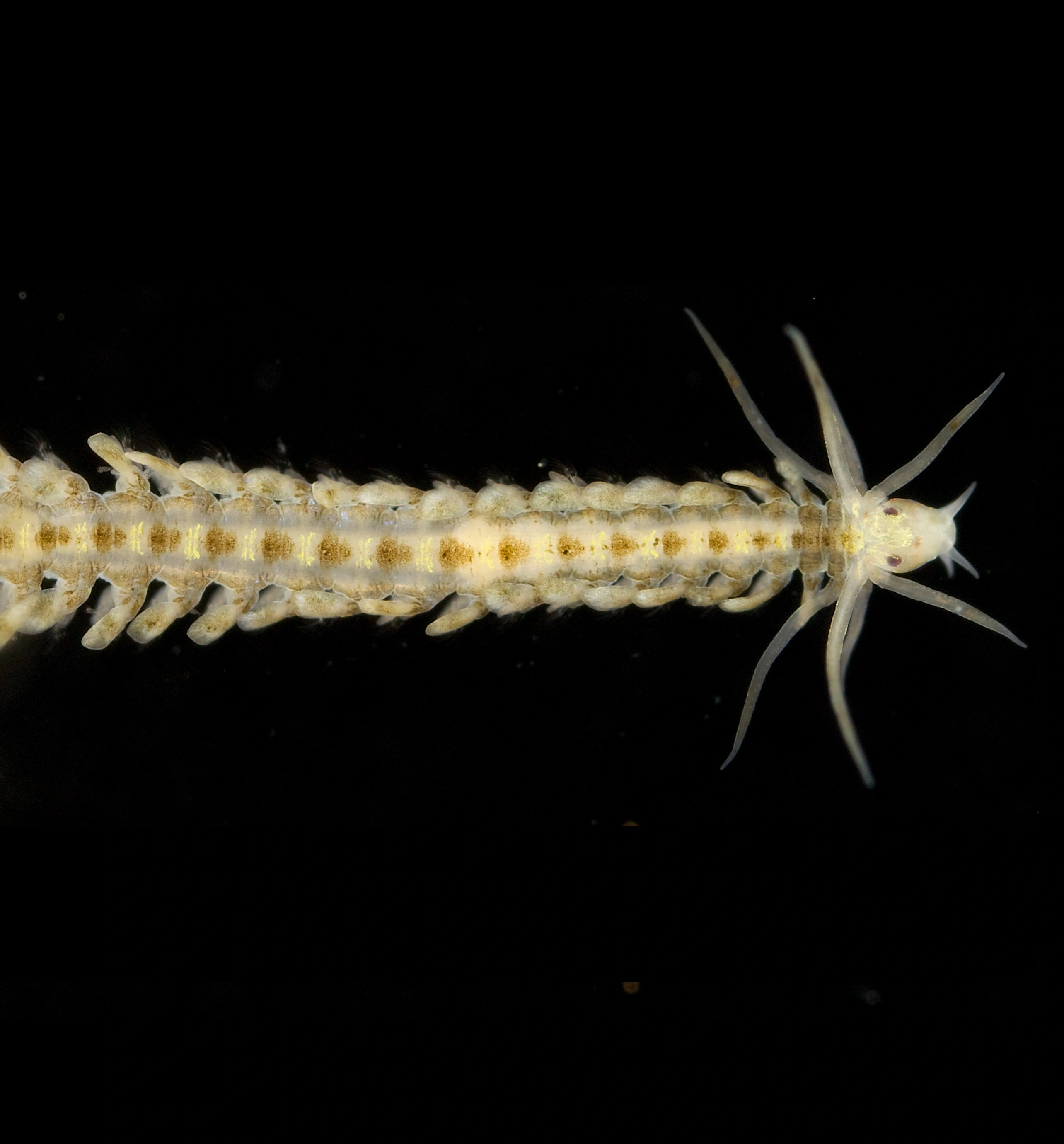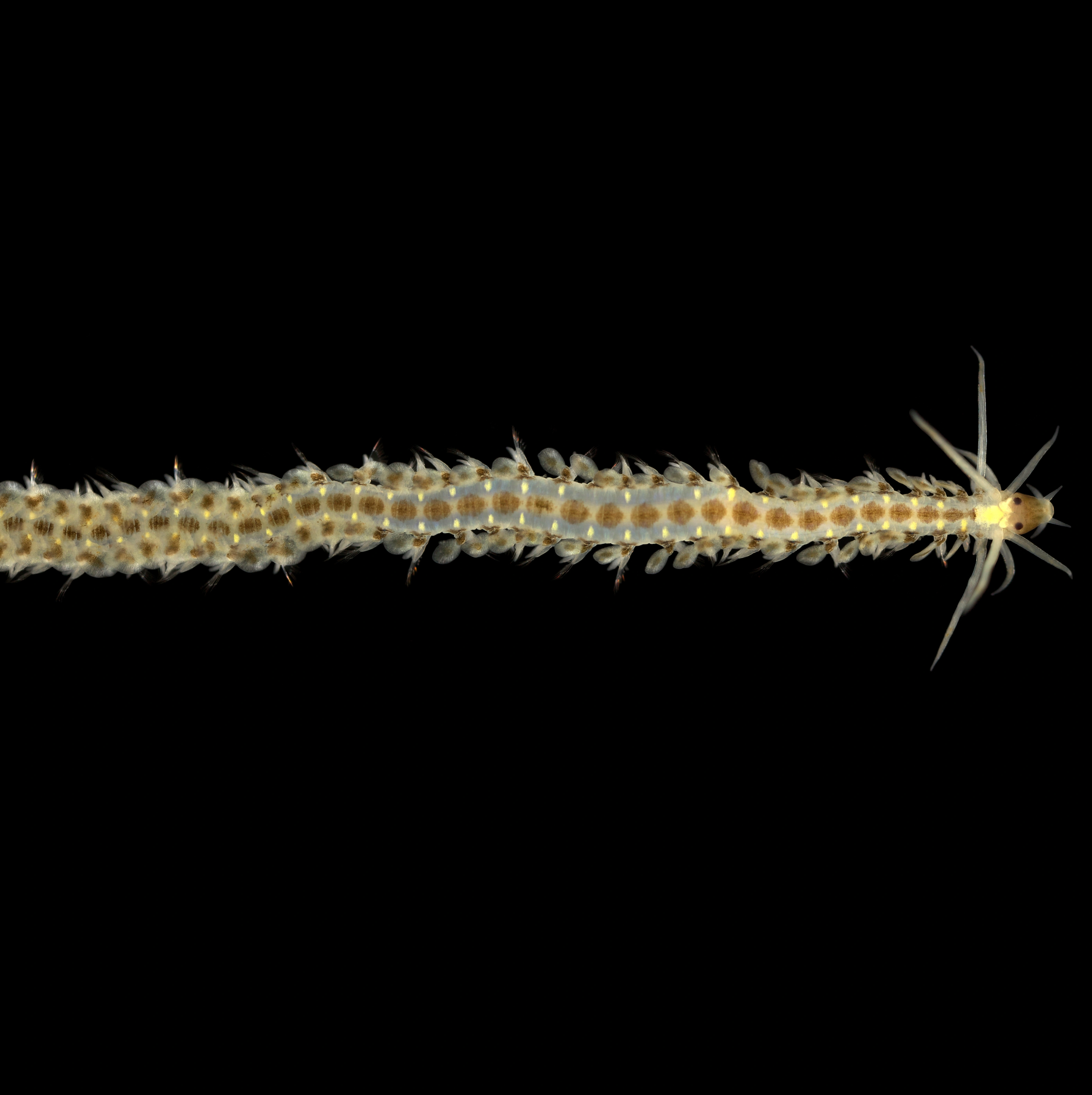Phyllodocidae
Phyllodocids are generally colourful and active annelids of the shallow water environments. They are characterised by their often flattened dorsal cirri, resembling paddles, which are the reason why they are known as paddle worms. They can produce mucus when disturbed. Several common species can be identified by their colour pattern when alive, but this fades with preservation.
- Innhold
- Characteristics
- Recommended citation
Characteristics
Phyllodocids are typically long and slender and are among the most active polychaetes found along the shore, especially on hard substrates. They are characterised by an eversible pharynx and leaf-like dorsal cirri. The head has two pairs of appendages at the front and a single median antenna known as a nuchal papilla. There may or may not be a pair of eyes. The first two or three body segments may be partly fused and have up to four pairs of tentacular cirri. The remaining body segments have leaf-like dorsal and ventral cirri, the dorsal ones being larger. Chaetae are present on all but the first segment.
Recommended citation
Nygren A. Phyllodocidae Ørsted, 1843. www.artsdatabanken.no/Pages/313957. Downloaded <year-month-day>.

